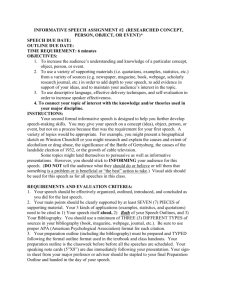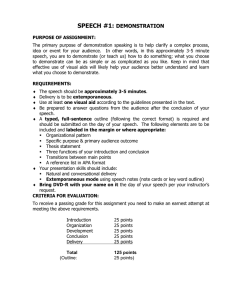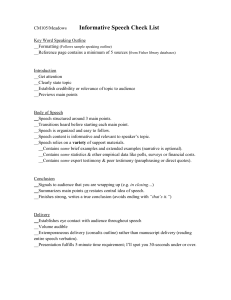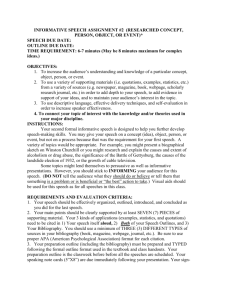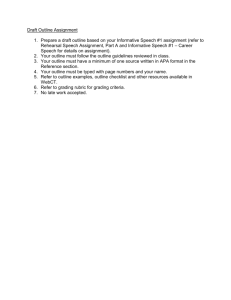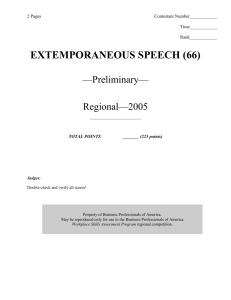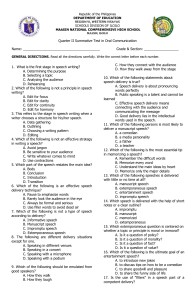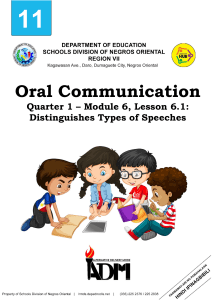DEMONSTRATION SPEECH ASSIGNMENT
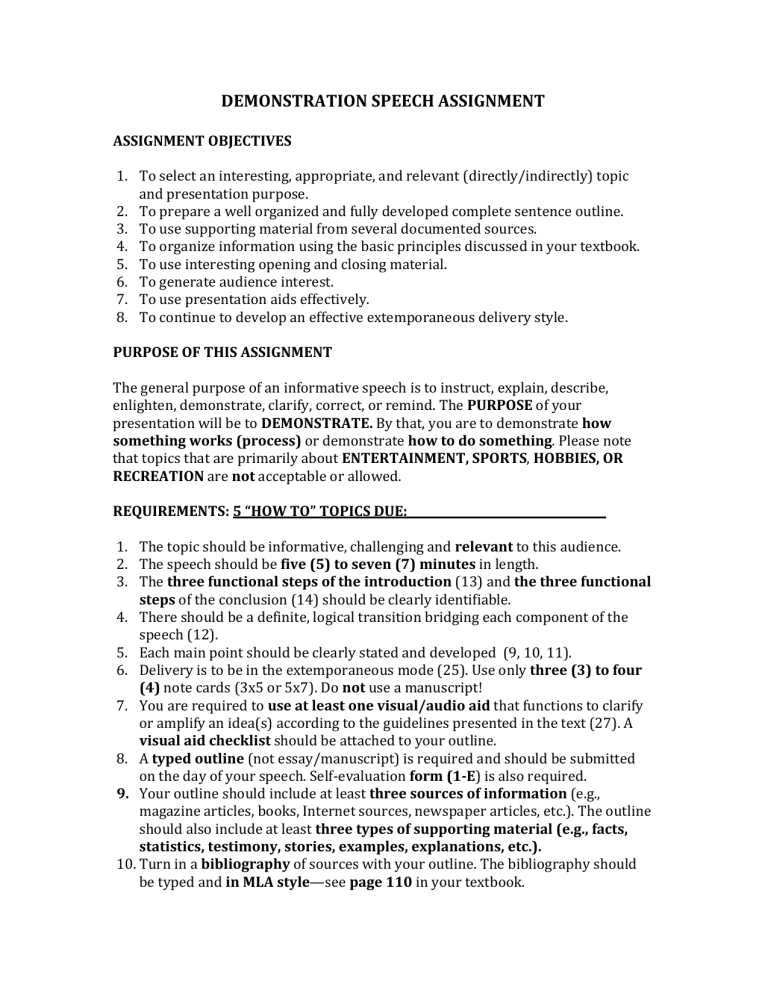
DEMONSTRATION SPEECH ASSIGNMENT
ASSIGNMENT OBJECTIVES
1.
To select an interesting, appropriate, and relevant (directly/indirectly) topic and presentation purpose.
2.
To prepare a well organized and fully developed complete sentence outline.
3.
To use supporting material from several documented sources.
4.
To organize information using the basic principles discussed in your textbook.
5.
To use interesting opening and closing material.
6.
To generate audience interest.
7.
To use presentation aids effectively.
8.
To continue to develop an effective extemporaneous delivery style.
PURPOSE OF THIS ASSIGNMENT
The general purpose of an informative speech is to instruct, explain, describe, enlighten, demonstrate, clarify, correct, or remind. The PURPOSE of your presentation will be to DEMONSTRATE.
By that, you are to demonstrate how something works (process) or demonstrate how to do something . Please note that topics that are primarily about ENTERTAINMENT, SPORTS , HOBBIES, OR
RECREATION are not acceptable or allowed.
REQUIREMENTS: 5 “HOW TO” TOPICS DUE: ___________________________________
1.
The topic should be informative, challenging and relevant to this audience.
2.
The speech should be five (5) to seven (7) minutes in length.
3.
The three functional steps of the introduction (13) and the three functional steps of the conclusion (14) should be clearly identifiable.
4.
There should be a definite, logical transition bridging each component of the speech (12).
5.
Each main point should be clearly stated and developed (9, 10, 11).
6.
Delivery is to be in the extemporaneous mode (25). Use only three (3) to four
(4) note cards (3x5 or 5x7). Do not use a manuscript!
7.
You are required to use at least one visual/audio aid that functions to clarify or amplify an idea(s) according to the guidelines presented in the text (27). A visual aid checklist should be attached to your outline.
8.
A typed outline (not essay/manuscript) is required and should be submitted on the day of your speech. Self‐evaluation form (1 ‐ E ) is also required.
9.
Your outline should include at least three sources of information (e.g., magazine articles, books, Internet sources, newspaper articles, etc.). The outline should also include at least three types of supporting material (e.g., facts, statistics, testimony, stories, examples, explanations, etc.).
10.
Turn in a bibliography of sources with your outline. The bibliography should be typed and in MLA style —see page 110 in your textbook.

